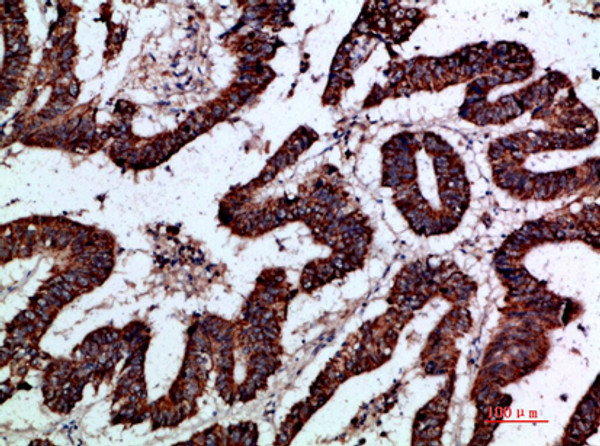| Host: | Rabbit |
| Applications: | WB/IHC/IF/ELISA |
| Reactivity: | Human/Mouse |
| Note: | STRICTLY FOR FURTHER SCIENTIFIC RESEARCH USE ONLY (RUO). MUST NOT TO BE USED IN DIAGNOSTIC OR THERAPEUTIC APPLICATIONS. |
| Short Description : | Rabbit polyclonal antibody anti-Gremlin-2 (71-120 aa) is suitable for use in Western Blot, Immunohistochemistry, Immunofluorescence and ELISA research applications. |
| Clonality : | Polyclonal |
| Conjugation: | Unconjugated |
| Isotype: | IgG |
| Formulation: | Liquid in PBS containing 50% Glycerol, 0.5% BSA and 0.02% Sodium Azide. |
| Purification: | The antibody was affinity-purified from rabbit antiserum by affinity-chromatography using epitope-specific immunogen. |
| Concentration: | 1 mg/mL |
| Dilution Range: | WB 1:500-2000IHC-P 1:500-200ELISA 1:10000-20000IF 1:50-200 |
| Storage Instruction: | Store at-20°C for up to 1 year from the date of receipt, and avoid repeat freeze-thaw cycles. |
| Gene Symbol: | GREM2 |
| Gene ID: | 64388 |
| Uniprot ID: | GREM2_HUMAN |
| Immunogen Region: | 71-120 aa |
| Specificity: | The antibody detects endogenous Gremlin-2 |
| Immunogen: | The antiserum was produced against synthesized peptide derived from the Internal region of human GREM2 at the amino acid range 71-120 |
| Function | Cytokine that inhibits the activity of BMP2 and BMP4 in a dose-dependent manner, and thereby modulates signaling by BMP family members. Contributes to the regulation of embryonic morphogenesis via BMP family members. Antagonizes BMP4-induced suppression of progesterone production in granulosa cells. |
| Protein Name | Gremlin-2Cysteine Knot Superfamily 1 - Bmp Antagonist 2Dan Domain Family Member 3Protein Related To Dan And Cerberus |
| Database Links | Reactome: R-HSA-201451 |
| Cellular Localisation | Secreted |
| Alternative Antibody Names | Anti-Gremlin-2 antibodyAnti-Cysteine Knot Superfamily 1 - Bmp Antagonist 2 antibodyAnti-Dan Domain Family Member 3 antibodyAnti-Protein Related To Dan And Cerberus antibodyAnti-GREM2 antibodyAnti-CKTSF1B2 antibodyAnti-DAND3 antibodyAnti-PRDC antibody |
Information sourced from Uniprot.org













